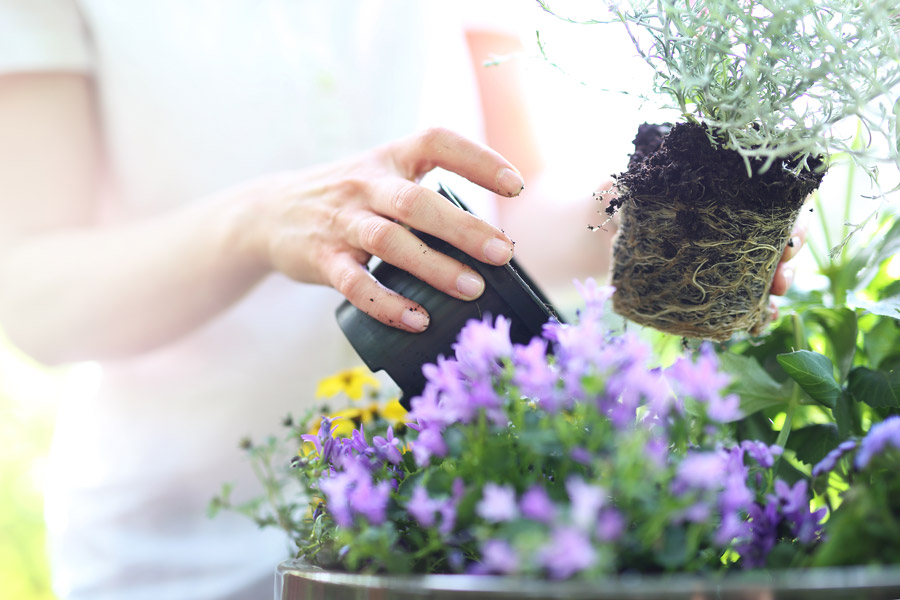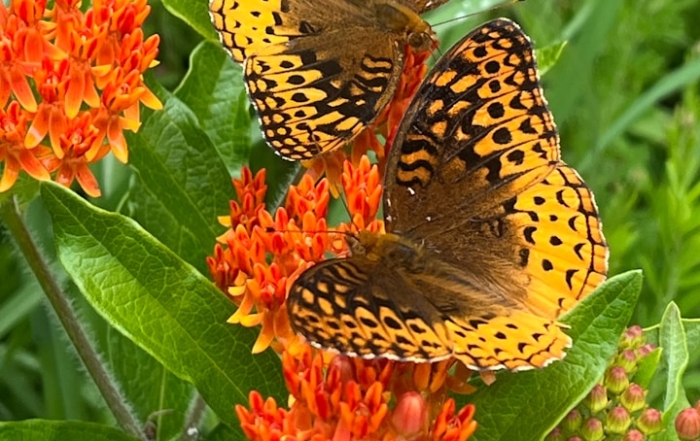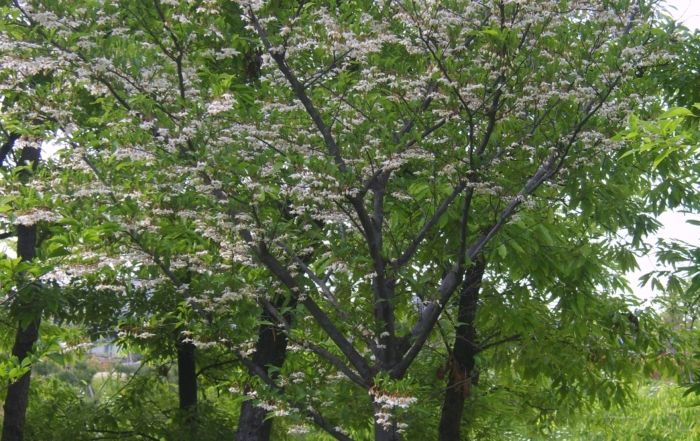Growing in containers is a smart choice for any gardener, whether new or novice. Both big yards and small balconies are equally suited for pots tucked away in spots. A thoughtful assortment of containers can grow a surprising amount of plants, whether your goal is cut flowers, decorative color or edible harvests. Use these six tips for a successful start.
1. Containers
Pots and planters come in all shapes and sizes. You can even make your own by repurposing old materials. However, the most important feature isn’t decor — it’s drainage. Make sure that every container has ample holes and is elevated on pot feet. Another important feature is size. Depending on the type of plant you want to grow, the diameter and depth of the pot is key for allowing enough “elbow” room. For edibles, it’s especially important to grow in larger containers at least 14 to 24 inches in diameter. Tomatoes are space hogs that succeed in large and deep pots, though you can underplant with basil and marigolds to efficiently use the soil. For most annual and perennial flowers, use the spacing recommendation on the plant tag, though you can typically squeeze in a few more for a lush effect. Remember that smaller pots dry out faster in our Alabama climate and therefore need more frequent watering, often daily.
2. Soil
What you put in the container is just as important its size and drainage holes. Much like how the quality of food we eat affects our health, a plant’s health is based in the quality of the soil in which it sits. For containers, it’s important to use bags of fresh potting soil or mix that is lightweight and drains well. For that reason, container plantings also need more frequent fertilizing than plants grown in the ground. Replace the soil after several growing seasons. For very large containers, you can save money on soil by filling one-third of the space at the bottom with crushed milk jugs, pine cones, or flattened soda cans.
3. Placement
Match the plant’s light requirements to the pot’s spot. it’s ideal to choose a space that receives at least 6-7 hours of direct sun each day for plants such as fruiting vegetables, herbs and sun-loving flowers. Other evergreens, root crops, lettuces and low-light perennials can put on quite a show in the shade. A great benefit of growing in containers is the ability to move these small gardens around for just the right spot.
4. Water
Containers dry out quickly and require frequent watering. For some, watering with a garden hose after sunrise is a nice way to start the day. For others, it’s a hassle. To keep your sanity, a smart solution is drip irrigation tubing connected to a timer on your outdoor spigot. Ask your local garden center for easy snap-and-build type installation options that make child’s play out of plumbing.
5. Plant Food
Nutrition is key to healthy, thriving plants. Just like us, plants need good food to grow well. Look for an organic liquid or granular feed and apply regularly, following package instructions. There are many options available, whether you’d like slow-release formulas that allow a “set it and forget it” approach or need a specific formula for prime performance.
6. Seeds & Plants
Start with quality, healthy plants and seeds for the most success. Avoid plants that have been stressed or neglected. Local garden centers are gold mines of diverse selections that perform well in our region, and stock new varieties that make plant collectors out of people who want the latest, neatest thing. Buying seeds can sometimes be the best way to source hard-to-find varieties and heirloom selections. Sowing seeds is also an addictive way to to learn about gardening from the ground up.




